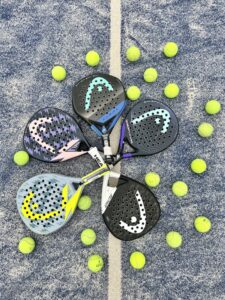From Service Boxes to Baseline: Navigating the Padel Court Diagram
2 min read
From Service Boxes to Baseline: Navigating the Padel Court Diagram
If you’re new to padel, the court layout might seem a bit daunting at first. But fear not, navigating the padel court diagram is simpler than you think.
Let’s start with the basics. The padel court is rectangular and measures 20 meters in length and 10 meters in width. The court is divided into two halves by a net, which is 88 centimeters in height at the center and 92 centimeters at the posts.
At each end of the court, you’ll find the service boxes. There are two service boxes, one on each side of the net. The service boxes are rectangular, measuring 6.95 meters in length and 3 meters in width.
The service boxes are divided into three sections. The first section is the service area. This is where the server must stand when serving the ball. The second section is the fault area. If the server steps on or over the line of the fault area when serving, it is considered a fault. The third section is the rest of the service box, which is in play.
Once the ball is served, the players must stay in their respective halves of the court. The receiving team can return the ball off the bounce, either before or after it hits the side wall. Once the ball has been returned, the point is in play.
The rest of the court is divided into two halves, the backcourt and the frontcourt. The frontcourt is the area between the net and the service line. The backcourt is the area between the service line and the back wall.
The point is won when one team makes a mistake. This can be a fault, a ball hit out of bounds, or the ball hitting the net on the way over. If the ball hits the net and lands in the correct court, the point is in play.
So, that’s the basics of the padel court diagram. But how do you navigate it during a game?
There are a few things to keep in mind. First, always stay in your half of the court. If you cross the net, it’s a point for the other team. Second, try to keep your shots low and close to the side walls. This will make it harder for your opponents to return the ball. Third, be aware of your positioning on the court. If you’re in the frontcourt, be prepared to move quickly to the backcourt if your opponent hits a lob.
By keeping these tips in mind and referring to the padel court diagram, you’ll soon become a master of navigating the court.
In conclusion, understanding the layout of the padel court is essential for any player. By familiarizing yourself with the service boxes, frontcourt, and backcourt, you’ll be well on your way to becoming a skilled padel player. So, grab your padel racket, head to the court, and get ready to have some fun!







